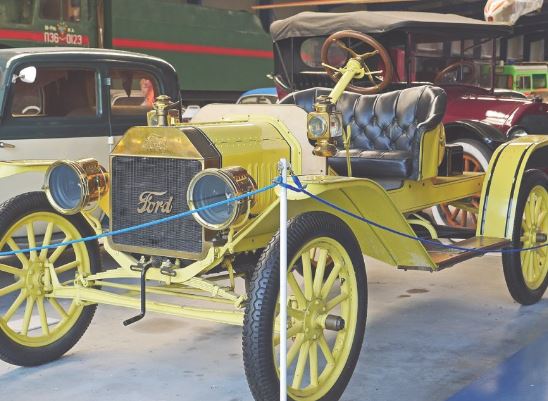Cars have been such a common part of our lives that we sometimes forget that they have existed for a very long time. If one were to write a book focusing only on car facts, it might actually be miles long!
Cars have been the most common form of transportation, and they have gone through different changes in terms of their overall design and structure. Some of these changes are geared towards protecting human life.
Take the airbag, for instance. Did you know that American industrial engineer and member of the United States Navy, John W. Hetrick designed and developed the first automobile airbag? He used his knowledge and experience in navy torpedoes to design the airbags. Today, his invention is one of the most valuable life-saving car devices.
While traveling to school or to work, have you ever thought about how many parts a car has? It’s got around 30,000 parts, can you believe that? Included in the list are big ones like the engine, wheels, and radiator, and small parts like nuts and bolts, screws, and chips.
It would truly be hard to imagine how life would be like without cars. In 2019, more than 90 million cars were manufactured worldwide! If you want to learn more about cars, now’s the time to fasten your seatbelts because there is so much more where that came from! Let us explore the world of cars through our collection of car facts. Enjoy the ride!
Nicolas-Joseph Cugnot built the first full-size car.
In 1769, French inventor Nicolas-Joseph Cugnot built the first full-size car, the Fardier à vapeur, with mechanical propellers capable of human transportation. He also created two steam tractors. Unfortunately, his inventions had problems with water supply and steam pressure.
Ferdinand Verbiest created a steam-powered automobile.
A member of the Jesuit mission in China, Ferdinand Verbiest, built a steam-powered automobile in 1672 as a toy for Emperor Kangxi, the second Qing emperor to rule over China proper. Although it is just a small car, incapable of carrying a driver, it is the first functional steam-powered car.
Carl Benz is the inventor of the first modern car.
German engineer Carl Friedrich built the first modern car. His Benz Patent Motorcar is the first modern automobile. The car has three wheels, while its engine is at the back part of the car. It also has a toothed rack or gear wheel for steering. Originally, this car cost around 150 US dollars. His invention was shown to the public on July 3, 1886.
Gottlieb Daimler built the first four-wheeled vehicle.
On 8 March 1886, German engineer Gottlieb Daimler, along with his business partner engine designer Wilhelm Maybach, built the first four-wheeled vehicle called “Daimler Cannstatt.”
Typically, Daimler Cannstatt is like a horse-drawn carriage. It is the first vehicle to run up to 16 kilometers per hour. A set of belts transmitted the engine power. Daimler Cannstatt had its first run on the road of Untertürkheim where Gottlieb-Daimler-Stadion, nowadays called Mercedes-Benz Arena, was located.
Mercedes-Benz is first called Daimler-Benz.
Mercedes-Benz, one of the most prestigious car and truck manufacturers in the world, is based in Stuttgart, Baden-Württemberg. In 1926, it was first called Daimler-Benz, due to the merger between Benz & Cie. and Daimler Motoren Gesellschaft.
However, on May 1, 1924, both companies signed an Agreement of Mutual Interest and continued to produce and sell cars separately. This went on until they formally merged on June 28, 1926, and agreed that all factories would use “Mercedes-Benz” on their automobiles.
Mercedes-Benz’s slogan is “the best or nothing”.
Noted for its constant, groundbreaking transformations and high-rank automotive designs, Mercedes-Benz brings to life its slogan, “Das Beste oder Nichts,” which means, ‘the best or nothing.’ The slogan means they vow to continuously give their best in every aspect of their vehicles and services.
The Duryea brothers built the gasoline-powered American car.
American engineer Charles Edgar Duryea, together with his brother Frank, road-tested the first gasoline-powered car. The Duryea brothers used a carriage which they bought for $70 as their first motor wagon or car. They also installed a single cylinder-gasoline motor and called the car the Duryea Motor Wagon. The Duryea wagon had its first run on September 21, 1893, on Taylor Street in Metro Center, Springfield.
Ford Model T was the first affordable car.
Ford Motor Company, founded by Henry Ford, produced the first affordable car. They called it the Ford Model T, which also became known as ‘tin Lizzie.’
Model T has a four-cylinder motor placed on the front part of the car. It has a speed of 40–45 mph. In 1909, it cost $825. As of 2012, Model T ranked 8 on the top ten list of most sold cars.
Most people believe that Henry Ford built the first automobile.
In contrast to this belief, Henry Ford began to build automobiles in 1896. As mentioned above, German engineers, Karl Benz and Gottlieb Daimler each built an automobile, 10 years ago in Germany. Nevertheless, Henry Ford’s vision to produce affordable cars for everyone made a great impact.
Ford Motor Company was established by Henry Ford
Five years later, after he introduced his first built T-Model, he established Ford Motor Company. Ford Motor Company, or simply, Ford, is a worldwide carmaker located in Dearborn, Michigan.
Today, the company sells commercial cars and automobiles under the Ford brand, including luxury cars under the Lincoln brand. The company is known by different names all over Asia — in Taiwan, it is called Ford Lio Ho, in China, it is called Changan Ford, in Turkey, it is called Ford Otosan, in Thailand, it is called AutoAlliance Thailand, and in Russia, it is called Ford Sollers.
What most people know about this car is that it is one of Ford’s most expensive car. But do you know that this type of car brand is full of secrets? The GT in its name is related to sports racing, GT means Grand Touring. Meanwhile, 40 refers to its body height in inches.
Ford Motor Company built this rare collectible vehicle between 1964 and 1969, and only 126 of this car was built in Great Britain. Not only that, this historical car is a four-time winner in 24 Hours of Le Mans, the world’s oldest active sports car race under the endurance racing category. It won from 1966 to 1969.


